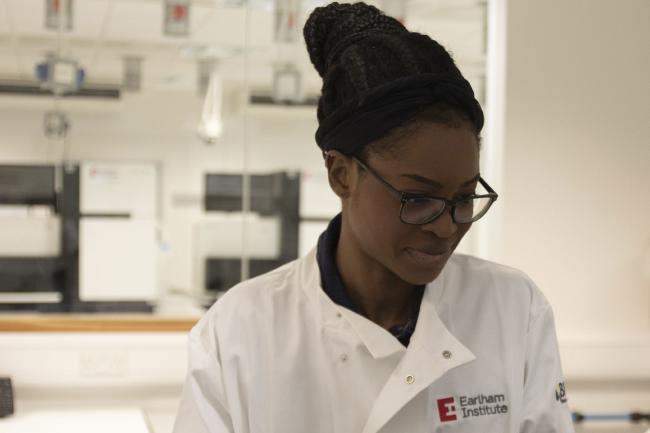
How To Write A Dissertation Or Thesis
8 straightforward steps to craft an a-grade dissertation.
By: Derek Jansen (MBA) Expert Reviewed By: Dr Eunice Rautenbach | June 2020
Writing a dissertation or thesis is not a simple task. It takes time, energy and a lot of will power to get you across the finish line. It’s not easy – but it doesn’t necessarily need to be a painful process. If you understand the big-picture process of how to write a dissertation or thesis, your research journey will be a lot smoother.
In this post, I’m going to outline the big-picture process of how to write a high-quality dissertation or thesis, without losing your mind along the way. If you’re just starting your research, this post is perfect for you. Alternatively, if you’ve already submitted your proposal, this article which covers how to structure a dissertation might be more helpful.
How To Write A Dissertation: 8 Steps
- Clearly understand what a dissertation (or thesis) is
- Find a unique and valuable research topic
- Craft a convincing research proposal
- Write up a strong introduction chapter
- Review the existing literature and compile a literature review
- Design a rigorous research strategy and undertake your own research
- Present the findings of your research
- Draw a conclusion and discuss the implications

Step 1: Understand exactly what a dissertation is
This probably sounds like a no-brainer, but all too often, students come to us for help with their research and the underlying issue is that they don’t fully understand what a dissertation (or thesis) actually is.
So, what is a dissertation?
At its simplest, a dissertation or thesis is a formal piece of research , reflecting the standard research process . But what is the standard research process, you ask? The research process involves 4 key steps:
- Ask a very specific, well-articulated question (s) (your research topic)
- See what other researchers have said about it (if they’ve already answered it)
- If they haven’t answered it adequately, undertake your own data collection and analysis in a scientifically rigorous fashion
- Answer your original question(s), based on your analysis findings

In short, the research process is simply about asking and answering questions in a systematic fashion . This probably sounds pretty obvious, but people often think they’ve done “research”, when in fact what they have done is:
- Started with a vague, poorly articulated question
- Not taken the time to see what research has already been done regarding the question
- Collected data and opinions that support their gut and undertaken a flimsy analysis
- Drawn a shaky conclusion, based on that analysis
If you want to see the perfect example of this in action, look out for the next Facebook post where someone claims they’ve done “research”… All too often, people consider reading a few blog posts to constitute research. Its no surprise then that what they end up with is an opinion piece, not research. Okay, okay – I’ll climb off my soapbox now.
The key takeaway here is that a dissertation (or thesis) is a formal piece of research, reflecting the research process. It’s not an opinion piece , nor a place to push your agenda or try to convince someone of your position. Writing a good dissertation involves asking a question and taking a systematic, rigorous approach to answering it.
If you understand this and are comfortable leaving your opinions or preconceived ideas at the door, you’re already off to a good start!

Step 2: Find a unique, valuable research topic
As we saw, the first step of the research process is to ask a specific, well-articulated question. In other words, you need to find a research topic that asks a specific question or set of questions (these are called research questions ). Sounds easy enough, right? All you’ve got to do is identify a question or two and you’ve got a winning research topic. Well, not quite…
A good dissertation or thesis topic has a few important attributes. Specifically, a solid research topic should be:
Let’s take a closer look at these:
Attribute #1: Clear
Your research topic needs to be crystal clear about what you’re planning to research, what you want to know, and within what context. There shouldn’t be any ambiguity or vagueness about what you’ll research.
Here’s an example of a clearly articulated research topic:
An analysis of consumer-based factors influencing organisational trust in British low-cost online equity brokerage firms.
As you can see in the example, its crystal clear what will be analysed (factors impacting organisational trust), amongst who (consumers) and in what context (British low-cost equity brokerage firms, based online).
Need a helping hand?
Attribute #2: Unique
Your research should be asking a question(s) that hasn’t been asked before, or that hasn’t been asked in a specific context (for example, in a specific country or industry).
For example, sticking organisational trust topic above, it’s quite likely that organisational trust factors in the UK have been investigated before, but the context (online low-cost equity brokerages) could make this research unique. Therefore, the context makes this research original.
One caveat when using context as the basis for originality – you need to have a good reason to suspect that your findings in this context might be different from the existing research – otherwise, there’s no reason to warrant researching it.
Attribute #3: Important
Simply asking a unique or original question is not enough – the question needs to create value. In other words, successfully answering your research questions should provide some value to the field of research or the industry. You can’t research something just to satisfy your curiosity. It needs to make some form of contribution either to research or industry.
For example, researching the factors influencing consumer trust would create value by enabling businesses to tailor their operations and marketing to leverage factors that promote trust. In other words, it would have a clear benefit to industry.
So, how do you go about finding a unique and valuable research topic? We explain that in detail in this video post – How To Find A Research Topic . Yeah, we’ve got you covered 😊
Step 3: Write a convincing research proposal
Once you’ve pinned down a high-quality research topic, the next step is to convince your university to let you research it. No matter how awesome you think your topic is, it still needs to get the rubber stamp before you can move forward with your research. The research proposal is the tool you’ll use for this job.
So, what’s in a research proposal?
The main “job” of a research proposal is to convince your university, advisor or committee that your research topic is worthy of approval. But convince them of what? Well, this varies from university to university, but generally, they want to see that:
- You have a clearly articulated, unique and important topic (this might sound familiar…)
- You’ve done some initial reading of the existing literature relevant to your topic (i.e. a literature review)
- You have a provisional plan in terms of how you will collect data and analyse it (i.e. a methodology)
At the proposal stage, it’s (generally) not expected that you’ve extensively reviewed the existing literature , but you will need to show that you’ve done enough reading to identify a clear gap for original (unique) research. Similarly, they generally don’t expect that you have a rock-solid research methodology mapped out, but you should have an idea of whether you’ll be undertaking qualitative or quantitative analysis , and how you’ll collect your data (we’ll discuss this in more detail later).
Long story short – don’t stress about having every detail of your research meticulously thought out at the proposal stage – this will develop as you progress through your research. However, you do need to show that you’ve “done your homework” and that your research is worthy of approval .
So, how do you go about crafting a high-quality, convincing proposal? We cover that in detail in this video post – How To Write A Top-Class Research Proposal . We’ve also got a video walkthrough of two proposal examples here .
Step 4: Craft a strong introduction chapter
Once your proposal’s been approved, its time to get writing your actual dissertation or thesis! The good news is that if you put the time into crafting a high-quality proposal, you’ve already got a head start on your first three chapters – introduction, literature review and methodology – as you can use your proposal as the basis for these.
Handy sidenote – our free dissertation & thesis template is a great way to speed up your dissertation writing journey.
What’s the introduction chapter all about?
The purpose of the introduction chapter is to set the scene for your research (dare I say, to introduce it…) so that the reader understands what you’ll be researching and why it’s important. In other words, it covers the same ground as the research proposal in that it justifies your research topic.
What goes into the introduction chapter?
This can vary slightly between universities and degrees, but generally, the introduction chapter will include the following:
- A brief background to the study, explaining the overall area of research
- A problem statement , explaining what the problem is with the current state of research (in other words, where the knowledge gap exists)
- Your research questions – in other words, the specific questions your study will seek to answer (based on the knowledge gap)
- The significance of your study – in other words, why it’s important and how its findings will be useful in the world
As you can see, this all about explaining the “what” and the “why” of your research (as opposed to the “how”). So, your introduction chapter is basically the salesman of your study, “selling” your research to the first-time reader and (hopefully) getting them interested to read more.
How do I write the introduction chapter, you ask? We cover that in detail in this post .

Step 5: Undertake an in-depth literature review
As I mentioned earlier, you’ll need to do some initial review of the literature in Steps 2 and 3 to find your research gap and craft a convincing research proposal – but that’s just scratching the surface. Once you reach the literature review stage of your dissertation or thesis, you need to dig a lot deeper into the existing research and write up a comprehensive literature review chapter.
What’s the literature review all about?
There are two main stages in the literature review process:
Literature Review Step 1: Reading up
The first stage is for you to deep dive into the existing literature (journal articles, textbook chapters, industry reports, etc) to gain an in-depth understanding of the current state of research regarding your topic. While you don’t need to read every single article, you do need to ensure that you cover all literature that is related to your core research questions, and create a comprehensive catalogue of that literature , which you’ll use in the next step.
Reading and digesting all the relevant literature is a time consuming and intellectually demanding process. Many students underestimate just how much work goes into this step, so make sure that you allocate a good amount of time for this when planning out your research. Thankfully, there are ways to fast track the process – be sure to check out this article covering how to read journal articles quickly .

Literature Review Step 2: Writing up
Once you’ve worked through the literature and digested it all, you’ll need to write up your literature review chapter. Many students make the mistake of thinking that the literature review chapter is simply a summary of what other researchers have said. While this is partly true, a literature review is much more than just a summary. To pull off a good literature review chapter, you’ll need to achieve at least 3 things:
- You need to synthesise the existing research , not just summarise it. In other words, you need to show how different pieces of theory fit together, what’s agreed on by researchers, what’s not.
- You need to highlight a research gap that your research is going to fill. In other words, you’ve got to outline the problem so that your research topic can provide a solution.
- You need to use the existing research to inform your methodology and approach to your own research design. For example, you might use questions or Likert scales from previous studies in your your own survey design .
As you can see, a good literature review is more than just a summary of the published research. It’s the foundation on which your own research is built, so it deserves a lot of love and attention. Take the time to craft a comprehensive literature review with a suitable structure .
But, how do I actually write the literature review chapter, you ask? We cover that in detail in this video post .
Step 6: Carry out your own research
Once you’ve completed your literature review and have a sound understanding of the existing research, its time to develop your own research (finally!). You’ll design this research specifically so that you can find the answers to your unique research question.
There are two steps here – designing your research strategy and executing on it:
1 – Design your research strategy
The first step is to design your research strategy and craft a methodology chapter . I won’t get into the technicalities of the methodology chapter here, but in simple terms, this chapter is about explaining the “how” of your research. If you recall, the introduction and literature review chapters discussed the “what” and the “why”, so it makes sense that the next point to cover is the “how” –that’s what the methodology chapter is all about.
In this section, you’ll need to make firm decisions about your research design. This includes things like:
- Your research philosophy (e.g. positivism or interpretivism )
- Your overall methodology (e.g. qualitative , quantitative or mixed methods)
- Your data collection strategy (e.g. interviews , focus groups, surveys)
- Your data analysis strategy (e.g. content analysis , correlation analysis, regression)
If these words have got your head spinning, don’t worry! We’ll explain these in plain language in other posts. It’s not essential that you understand the intricacies of research design (yet!). The key takeaway here is that you’ll need to make decisions about how you’ll design your own research, and you’ll need to describe (and justify) your decisions in your methodology chapter.
2 – Execute: Collect and analyse your data
Once you’ve worked out your research design, you’ll put it into action and start collecting your data. This might mean undertaking interviews, hosting an online survey or any other data collection method. Data collection can take quite a bit of time (especially if you host in-person interviews), so be sure to factor sufficient time into your project plan for this. Oftentimes, things don’t go 100% to plan (for example, you don’t get as many survey responses as you hoped for), so bake a little extra time into your budget here.
Once you’ve collected your data, you’ll need to do some data preparation before you can sink your teeth into the analysis. For example:
- If you carry out interviews or focus groups, you’ll need to transcribe your audio data to text (i.e. a Word document).
- If you collect quantitative survey data, you’ll need to clean up your data and get it into the right format for whichever analysis software you use (for example, SPSS, R or STATA).
Once you’ve completed your data prep, you’ll undertake your analysis, using the techniques that you described in your methodology. Depending on what you find in your analysis, you might also do some additional forms of analysis that you hadn’t planned for. For example, you might see something in the data that raises new questions or that requires clarification with further analysis.
The type(s) of analysis that you’ll use depend entirely on the nature of your research and your research questions. For example:
- If your research if exploratory in nature, you’ll often use qualitative analysis techniques .
- If your research is confirmatory in nature, you’ll often use quantitative analysis techniques
- If your research involves a mix of both, you might use a mixed methods approach
Again, if these words have got your head spinning, don’t worry! We’ll explain these concepts and techniques in other posts. The key takeaway is simply that there’s no “one size fits all” for research design and methodology – it all depends on your topic, your research questions and your data. So, don’t be surprised if your study colleagues take a completely different approach to yours.

Step 7: Present your findings
Once you’ve completed your analysis, it’s time to present your findings (finally!). In a dissertation or thesis, you’ll typically present your findings in two chapters – the results chapter and the discussion chapter .
What’s the difference between the results chapter and the discussion chapter?
While these two chapters are similar, the results chapter generally just presents the processed data neatly and clearly without interpretation, while the discussion chapter explains the story the data are telling – in other words, it provides your interpretation of the results.
For example, if you were researching the factors that influence consumer trust, you might have used a quantitative approach to identify the relationship between potential factors (e.g. perceived integrity and competence of the organisation) and consumer trust. In this case:
- Your results chapter would just present the results of the statistical tests. For example, correlation results or differences between groups. In other words, the processed numbers.
- Your discussion chapter would explain what the numbers mean in relation to your research question(s). For example, Factor 1 has a weak relationship with consumer trust, while Factor 2 has a strong relationship.
Depending on the university and degree, these two chapters (results and discussion) are sometimes merged into one , so be sure to check with your institution what their preference is. Regardless of the chapter structure, this section is about presenting the findings of your research in a clear, easy to understand fashion.
Importantly, your discussion here needs to link back to your research questions (which you outlined in the introduction or literature review chapter). In other words, it needs to answer the key questions you asked (or at least attempt to answer them).
For example, if we look at the sample research topic:
In this case, the discussion section would clearly outline which factors seem to have a noteworthy influence on organisational trust. By doing so, they are answering the overarching question and fulfilling the purpose of the research .

For more information about the results chapter , check out this post for qualitative studies and this post for quantitative studies .
Step 8: The Final Step Draw a conclusion and discuss the implications
Last but not least, you’ll need to wrap up your research with the conclusion chapter . In this chapter, you’ll bring your research full circle by highlighting the key findings of your study and explaining what the implications of these findings are.
What exactly are key findings? The key findings are those findings which directly relate to your original research questions and overall research objectives (which you discussed in your introduction chapter). The implications, on the other hand, explain what your findings mean for industry, or for research in your area.
Sticking with the consumer trust topic example, the conclusion might look something like this:
Key findings
This study set out to identify which factors influence consumer-based trust in British low-cost online equity brokerage firms. The results suggest that the following factors have a large impact on consumer trust:
While the following factors have a very limited impact on consumer trust:
Notably, within the 25-30 age groups, Factors E had a noticeably larger impact, which may be explained by…
Implications
The findings having noteworthy implications for British low-cost online equity brokers. Specifically:
The large impact of Factors X and Y implies that brokers need to consider….
The limited impact of Factor E implies that brokers need to…
As you can see, the conclusion chapter is basically explaining the “what” (what your study found) and the “so what?” (what the findings mean for the industry or research). This brings the study full circle and closes off the document.

Let’s recap – how to write a dissertation or thesis
You’re still with me? Impressive! I know that this post was a long one, but hopefully you’ve learnt a thing or two about how to write a dissertation or thesis, and are now better equipped to start your own research.
To recap, the 8 steps to writing a quality dissertation (or thesis) are as follows:
- Understand what a dissertation (or thesis) is – a research project that follows the research process.
- Find a unique (original) and important research topic
- Craft a convincing dissertation or thesis research proposal
- Write a clear, compelling introduction chapter
- Undertake a thorough review of the existing research and write up a literature review
- Undertake your own research
- Present and interpret your findings
Once you’ve wrapped up the core chapters, all that’s typically left is the abstract , reference list and appendices. As always, be sure to check with your university if they have any additional requirements in terms of structure or content.

Psst... there’s more!
This post was based on one of our popular Research Bootcamps . If you're working on a research project, you'll definitely want to check this out ...
You Might Also Like:

20 Comments
thankfull >>>this is very useful
Thank you, it was really helpful
unquestionably, this amazing simplified way of teaching. Really , I couldn’t find in the literature words that fully explicit my great thanks to you. However, I could only say thanks a-lot.
Great to hear that – thanks for the feedback. Good luck writing your dissertation/thesis.
This is the most comprehensive explanation of how to write a dissertation. Many thanks for sharing it free of charge.
Very rich presentation. Thank you
Thanks Derek Jansen|GRADCOACH, I find it very useful guide to arrange my activities and proceed to research!
Thank you so much for such a marvelous teaching .I am so convinced that am going to write a comprehensive and a distinct masters dissertation
It is an amazing comprehensive explanation
This was straightforward. Thank you!
I can say that your explanations are simple and enlightening – understanding what you have done here is easy for me. Could you write more about the different types of research methods specific to the three methodologies: quan, qual and MM. I look forward to interacting with this website more in the future.
Thanks for the feedback and suggestions 🙂
Hello, your write ups is quite educative. However, l have challenges in going about my research questions which is below; *Building the enablers of organisational growth through effective governance and purposeful leadership.*
Very educating.
Just listening to the name of the dissertation makes the student nervous. As writing a top-quality dissertation is a difficult task as it is a lengthy topic, requires a lot of research and understanding and is usually around 10,000 to 15000 words. Sometimes due to studies, unbalanced workload or lack of research and writing skill students look for dissertation submission from professional writers.
Thank you 💕😊 very much. I was confused but your comprehensive explanation has cleared my doubts of ever presenting a good thesis. Thank you.
thank you so much, that was so useful
Hi. Where is the excel spread sheet ark?
could you please help me look at your thesis paper to enable me to do the portion that has to do with the specification
my topic is “the impact of domestic revenue mobilization.
Submit a Comment Cancel reply
Your email address will not be published. Required fields are marked *
Save my name, email, and website in this browser for the next time I comment.
- Print Friendly
- Share on twitter
- Share on facebook
10 tips for writing a PhD thesis
Ingrid curl shares simple rules for keeping your work clear and jargon-free.
- Share on linkedin
- Share on mail

Writing up a PhD can often take place in a frenzy of activity in the last few months of your degree study, after years of hard work. But there are some steps that you can take to increase your chances of success.
- Do not be daunted by the task of “writing up”. Work on the text as your PhD takes shape, remember that all writers need editing, and help yourself by using these basic tips to make life easier. Read what great writers say about how to write before you start, and take their advice to heart. There is no dark art to clear, concise work; it is mostly a result of editing, and editing again. Above all, keep Elmore Leonard’s advice in mind: “If it reads like writing…rewrite it.”
- Plan the structure of your thesis carefully with your supervisor. Create rough drafts as you go so that you can refine them as you become more focused on the write-up. Much of writing comprises rewriting so be prepared to rework each chapter many times. Even Ernest Hemingway said: “The first draft of everything is shit.”
- Academic writing does not have to be dry. Inject some flair into your work. Read advice on writing and remember George Orwell’s words in Why I Write : “Never use the passive where you can use the active”; and Mark Twain’s on adjectives: “When you catch an adjective, kill it.” If you prefer, Stephen King said: “The road to hell is paved with adverbs.”
- Do not write up in chronological order. Work on each chapter while it is fresh in your mind or pertinent to what you are doing at that moment, but come back to it all later and work it up into a consistent, coherent piece, restructuring sections where necessary.
- Think carefully about your writing. Write your first draft, leave it and then come back to it with a critical eye. Look objectively at the writing and read it closely for style and sense. Look out for common errors such as dangling modifiers, subject-verb disagreement and inconsistency. If you are too involved with the text to be able to take a step back and do this, then ask a friend or colleague to read it with a critical eye. Remember Hemingway’s advice: “Prose is architecture, not interior decoration.” Clarity is key.
- Most universities use a preferred style of references. Make sure you know what this is and stick to it. One of the most common errors in academic writing is to cite papers in the text that do not then appear in the bibliography. All references in your thesis need to be cross-checked with the bibliography before submission. Using a database during your research can save a great deal of time in the writing-up process. Helpful software includes EndNote or Paperpile. Managing your bibliography from day one may seem obsessive but it will save you a great deal of time and stress by the end of the PhD process.
- Use a house style. Professional publications such as Times Higher Education use a house style guide to ensure consistency in spelling. For example, do not use both -ise spellings and -ize spellings, stick to British spelling and be consistent when referring to organisations or bodies. Because dictionaries vary in their use of hyphenation, use one dictionary and stick to it throughout the writing process. If you consult the New Oxford Dictionary for Writers and Editors , you will note the extraordinary number of words with alternative spellings. It can also be a very useful guide to preferred spellings, use of italicisation and foreign phrases.
- Take care when quoting from other sources. Ensure you note whether the italic emphasis is in the original and take careful notes when you are collecting quotes for your thesis. Transcribe them accurately to save work later and keep original spellings (even if they differ from your chosen style) to ensure fidelity to your source.
- Think about plagiarism. If you are quoting from works, quote from them accurately and paraphrase where necessary for your argument. This is where careful note-taking and use of references is invaluable and will help you to avoid even inadvertently plagiarising another work.
- Remember that your thesis is your chance to present your work in the best possible light. Consider your opening paragraphs, entice your reader with your writing and above all be clear about your hypothesis and your conclusion. Append material where it adds value but not where it merely bulks out your work. Consider your reader at all times. This is your chance to showcase your work.
If you stick to these simple rules, your writing will be clear and jargon-free. Above all, take to heart Orwell’s advice: “Never use a foreign phrase, a scientific word, or a jargon word if you can think of an everyday English equivalent.”
Ingrid Curl is associate editor of Times Higher Education , and a former PhD student.
Register to continue
Why register?
- Registration is free and only takes a moment
- Once registered, you can read 3 articles a month
- Sign up for our newsletter
Or subscribe for unlimited access to:
- Unlimited access to news, views, insights & reviews
- Digital editions
- Digital access to THE’s university and college rankings analysis
Already registered or a current subscriber? Login
Related articles

How to submit a PhD thesis
The final few months of a PhD can often be the hardest, so here are a few tips from a doctoral candidate who recently submitted her thesis

NIH raises postdoctoral salaries, but below target
Top US funding agency manages record increase in key programme for younger scientists, and sees gains in overall equity, while absorbing net cut in its annual budget

How to win the citation game without becoming a cynic
Boosting your publication metrics need not come at the expense of your integrity if you bear in mind these 10 tips, says Adrian Furnham

Black vice-chancellor eyes new generation of minority researchers
David Mba creates fully funded PhD studentships after taking reins at Birmingham City University
Featured jobs
Have a language expert improve your writing
Run a free plagiarism check in 10 minutes, automatically generate references for free.
- Knowledge Base
- Dissertation
How to Write a Dissertation | A Guide to Structure & Content
A dissertation or thesis is a long piece of academic writing based on original research, submitted as part of an undergraduate or postgraduate degree.
The structure of a dissertation depends on your field, but it is usually divided into at least four or five chapters (including an introduction and conclusion chapter).
The most common dissertation structure in the sciences and social sciences includes:
- An introduction to your topic
- A literature review that surveys relevant sources
- An explanation of your methodology
- An overview of the results of your research
- A discussion of the results and their implications
- A conclusion that shows what your research has contributed
Dissertations in the humanities are often structured more like a long essay , building an argument by analysing primary and secondary sources . Instead of the standard structure outlined here, you might organise your chapters around different themes or case studies.
Other important elements of the dissertation include the title page , abstract , and reference list . If in doubt about how your dissertation should be structured, always check your department’s guidelines and consult with your supervisor.
Instantly correct all language mistakes in your text
Be assured that you'll submit flawless writing. Upload your document to correct all your mistakes.

Table of contents
Acknowledgements, table of contents, list of figures and tables, list of abbreviations, introduction, literature review / theoretical framework, methodology, reference list.
The very first page of your document contains your dissertation’s title, your name, department, institution, degree program, and submission date. Sometimes it also includes your student number, your supervisor’s name, and the university’s logo. Many programs have strict requirements for formatting the dissertation title page .
The title page is often used as cover when printing and binding your dissertation .
The only proofreading tool specialized in correcting academic writing
The academic proofreading tool has been trained on 1000s of academic texts and by native English editors. Making it the most accurate and reliable proofreading tool for students.

Correct my document today
The acknowledgements section is usually optional, and gives space for you to thank everyone who helped you in writing your dissertation. This might include your supervisors, participants in your research, and friends or family who supported you.
The abstract is a short summary of your dissertation, usually about 150-300 words long. You should write it at the very end, when you’ve completed the rest of the dissertation. In the abstract, make sure to:
- State the main topic and aims of your research
- Describe the methods you used
- Summarise the main results
- State your conclusions
Although the abstract is very short, it’s the first part (and sometimes the only part) of your dissertation that people will read, so it’s important that you get it right. If you’re struggling to write a strong abstract, read our guide on how to write an abstract .
In the table of contents, list all of your chapters and subheadings and their page numbers. The dissertation contents page gives the reader an overview of your structure and helps easily navigate the document.
All parts of your dissertation should be included in the table of contents, including the appendices. You can generate a table of contents automatically in Word.
If you have used a lot of tables and figures in your dissertation, you should itemise them in a numbered list . You can automatically generate this list using the Insert Caption feature in Word.
If you have used a lot of abbreviations in your dissertation, you can include them in an alphabetised list of abbreviations so that the reader can easily look up their meanings.
If you have used a lot of highly specialised terms that will not be familiar to your reader, it might be a good idea to include a glossary . List the terms alphabetically and explain each term with a brief description or definition.
In the introduction, you set up your dissertation’s topic, purpose, and relevance, and tell the reader what to expect in the rest of the dissertation. The introduction should:
- Establish your research topic , giving necessary background information to contextualise your work
- Narrow down the focus and define the scope of the research
- Discuss the state of existing research on the topic, showing your work’s relevance to a broader problem or debate
- Clearly state your objectives and research questions , and indicate how you will answer them
- Give an overview of your dissertation’s structure
Everything in the introduction should be clear, engaging, and relevant to your research. By the end, the reader should understand the what , why and how of your research. Not sure how? Read our guide on how to write a dissertation introduction .
Before you start on your research, you should have conducted a literature review to gain a thorough understanding of the academic work that already exists on your topic. This means:
- Collecting sources (e.g. books and journal articles) and selecting the most relevant ones
- Critically evaluating and analysing each source
- Drawing connections between them (e.g. themes, patterns, conflicts, gaps) to make an overall point
In the dissertation literature review chapter or section, you shouldn’t just summarise existing studies, but develop a coherent structure and argument that leads to a clear basis or justification for your own research. For example, it might aim to show how your research:
- Addresses a gap in the literature
- Takes a new theoretical or methodological approach to the topic
- Proposes a solution to an unresolved problem
- Advances a theoretical debate
- Builds on and strengthens existing knowledge with new data
The literature review often becomes the basis for a theoretical framework , in which you define and analyse the key theories, concepts and models that frame your research. In this section you can answer descriptive research questions about the relationship between concepts or variables.
The methodology chapter or section describes how you conducted your research, allowing your reader to assess its validity. You should generally include:
- The overall approach and type of research (e.g. qualitative, quantitative, experimental, ethnographic)
- Your methods of collecting data (e.g. interviews, surveys, archives)
- Details of where, when, and with whom the research took place
- Your methods of analysing data (e.g. statistical analysis, discourse analysis)
- Tools and materials you used (e.g. computer programs, lab equipment)
- A discussion of any obstacles you faced in conducting the research and how you overcame them
- An evaluation or justification of your methods
Your aim in the methodology is to accurately report what you did, as well as convincing the reader that this was the best approach to answering your research questions or objectives.
Next, you report the results of your research . You can structure this section around sub-questions, hypotheses, or topics. Only report results that are relevant to your objectives and research questions. In some disciplines, the results section is strictly separated from the discussion, while in others the two are combined.
For example, for qualitative methods like in-depth interviews, the presentation of the data will often be woven together with discussion and analysis, while in quantitative and experimental research, the results should be presented separately before you discuss their meaning. If you’re unsure, consult with your supervisor and look at sample dissertations to find out the best structure for your research.
In the results section it can often be helpful to include tables, graphs and charts. Think carefully about how best to present your data, and don’t include tables or figures that just repeat what you have written – they should provide extra information or usefully visualise the results in a way that adds value to your text.
Full versions of your data (such as interview transcripts) can be included as an appendix .
The discussion is where you explore the meaning and implications of your results in relation to your research questions. Here you should interpret the results in detail, discussing whether they met your expectations and how well they fit with the framework that you built in earlier chapters. If any of the results were unexpected, offer explanations for why this might be. It’s a good idea to consider alternative interpretations of your data and discuss any limitations that might have influenced the results.
The discussion should reference other scholarly work to show how your results fit with existing knowledge. You can also make recommendations for future research or practical action.
The dissertation conclusion should concisely answer the main research question, leaving the reader with a clear understanding of your central argument. Wrap up your dissertation with a final reflection on what you did and how you did it. The conclusion often also includes recommendations for research or practice.
In this section, it’s important to show how your findings contribute to knowledge in the field and why your research matters. What have you added to what was already known?
You must include full details of all sources that you have cited in a reference list (sometimes also called a works cited list or bibliography). It’s important to follow a consistent reference style . Each style has strict and specific requirements for how to format your sources in the reference list.
The most common styles used in UK universities are Harvard referencing and Vancouver referencing . Your department will often specify which referencing style you should use – for example, psychology students tend to use APA style , humanities students often use MHRA , and law students always use OSCOLA . M ake sure to check the requirements, and ask your supervisor if you’re unsure.
To save time creating the reference list and make sure your citations are correctly and consistently formatted, you can use our free APA Citation Generator .
Your dissertation itself should contain only essential information that directly contributes to answering your research question. Documents you have used that do not fit into the main body of your dissertation (such as interview transcripts, survey questions or tables with full figures) can be added as appendices .
Is this article helpful?
Other students also liked.
- What Is a Dissertation? | 5 Essential Questions to Get Started
- What is a Literature Review? | Guide, Template, & Examples
- How to Write a Dissertation Proposal | A Step-by-Step Guide
More interesting articles
- Checklist: Writing a dissertation
- Dissertation & Thesis Outline | Example & Free Templates
- Dissertation binding and printing
- Dissertation Table of Contents in Word | Instructions & Examples
- Dissertation title page
- Example Theoretical Framework of a Dissertation or Thesis
- Figure & Table Lists | Word Instructions, Template & Examples
- How to Choose a Dissertation Topic | 8 Steps to Follow
- How to Write a Discussion Section | Tips & Examples
- How to Write a Results Section | Tips & Examples
- How to Write a Thesis or Dissertation Conclusion
- How to Write a Thesis or Dissertation Introduction
- How to Write an Abstract | Steps & Examples
- How to Write Recommendations in Research | Examples & Tips
- List of Abbreviations | Example, Template & Best Practices
- Operationalisation | A Guide with Examples, Pros & Cons
- Prize-Winning Thesis and Dissertation Examples
- Relevance of Your Dissertation Topic | Criteria & Tips
- Research Paper Appendix | Example & Templates
- Thesis & Dissertation Acknowledgements | Tips & Examples
- Thesis & Dissertation Database Examples
- What is a Dissertation Preface? | Definition & Examples
- What is a Glossary? | Definition, Templates, & Examples
- What Is a Research Methodology? | Steps & Tips
- What is a Theoretical Framework? | A Step-by-Step Guide
- What Is a Thesis? | Ultimate Guide & Examples
Purdue Online Writing Lab Purdue OWL® College of Liberal Arts
Thesis and Dissertation: Getting Started

Welcome to the Purdue OWL
This page is brought to you by the OWL at Purdue University. When printing this page, you must include the entire legal notice.
Copyright ©1995-2018 by The Writing Lab & The OWL at Purdue and Purdue University. All rights reserved. This material may not be published, reproduced, broadcast, rewritten, or redistributed without permission. Use of this site constitutes acceptance of our terms and conditions of fair use.
The resources in this section are designed to provide guidance for the first steps of the thesis or dissertation writing process. They offer tools to support the planning and managing of your project, including writing out your weekly schedule, outlining your goals, and organzing the various working elements of your project.
Weekly Goals Sheet (a.k.a. Life Map) [Word Doc]
This editable handout provides a place for you to fill in available time blocks on a weekly chart that will help you visualize the amount of time you have available to write. By using this chart, you will be able to work your writing goals into your schedule and put these goals into perspective with your day-to-day plans and responsibilities each week. This handout also contains a formula to help you determine the minimum number of pages you would need to write per day in order to complete your writing on time.
Setting a Production Schedule (Word Doc)
This editable handout can help you make sense of the various steps involved in the production of your thesis or dissertation and determine how long each step might take. A large part of this process involves (1) seeking out the most accurate and up-to-date information regarding specific document formatting requirements, (2) understanding research protocol limitations, (3) making note of deadlines, and (4) understanding your personal writing habits.
Creating a Roadmap (PDF)
Part of organizing your writing involves having a clear sense of how the different working parts relate to one another. Creating a roadmap for your dissertation early on can help you determine what the final document will include and how all the pieces are connected. This resource offers guidance on several approaches to creating a roadmap, including creating lists, maps, nut-shells, visuals, and different methods for outlining. It is important to remember that you can create more than one roadmap (or more than one type of roadmap) depending on how the different approaches discussed here meet your needs.

Get science-backed answers as you write with Paperpal's Research feature
PhD Thesis First Draft: 8 Practical Writing Tips for PhD Students

Many early career researchers will agree that the most difficult step in writing a PhD thesis is getting started. Students often find themselves mentally unprepared to take on this challenge as most formal training revolves around conducting research with little focus on how to write a PhD thesis. Uncertainty about the guidelines for PhD thesis writing and how to present their study in an engaging, impactful way often results in procrastination, self-doubt, and anxiety among otherwise confident researchers. The fact is students need to write a PhD thesis to complete their doctoral degree, and as ironic as it seems, the only remedy to this inertia is to meet this challenge head-on.
This article provides young researchers with practical tips to help them deliver a successful first draft when writing a PhD thesis.
- Create an outline and structure: A good way to start writing a PhD thesis is to first create a draft outline or structure of your thesis. Like journal articles, a PhD thesis must have an introduction that presents the key points of your study in a compelling way, a body section that contains the main aspects of your research along with supporting data and evidence, and a conclusion that summarizes the thesis and provides additional insights or suggestions for further research. This first step is important because once you have the right structure in place, summarizing your thesis can happen more easily.
- Adhere to university or institutional guidelines: A common mistake that many students make while creating an outline and structure is not keeping in mind the guidelines for PhD thesis writing set by your university or institute. It’s important to adhere to the university or institute’s guidelines, for example the preferred structure or style of references, when writing a PhD thesis. Be sure to check with your supervisor to ensure that the word count, structure, citation style and other key elements of your thesis meet the recommended guidelines for PhD thesis writing.
- Use active voice and avoid grammatical and spelling errors: It is important to focus on using simple language that’s free of complicated jargon when writing a PhD thesis. To ensure better readability, use active voice instead of passive voice and avoid long winding sentences. Be aware of and avoid spelling and grammar errors such as dangling modifiers, subject-verb disagreement, and parallelism in your work. You can use AI tools like Paperpal for Word , which offers real-time suggestions to help you improve your language right from the first draft itself.
- Maintain consistency in your writing style: One of the most useful writing tips for PhD students is referring to the preferred style guide to ensure consistency in spellings, proper punctuation, correct hyphenation, and the right use of technical terms and phrases. Also check for consistency when it comes mentioning organizations and institutions, affiliations, references, legends and other key elements when writing a PhD thesis.
- Be careful when citing or quoting text: With the sheer quantum of research reading required when writing a PhD thesis, it can be difficult to keep track of sources of information. It is also quite possible for students to inadvertently introduce plagiarism in their writing by using chunks of well-written text as is or quoting information without citing it correctly. So be sure to properly cite any sources of data that you’re using in your thesis, including text, images and figures to avoid any ethical misconduct.
- Set a target deadline for completion : Another top writing tip for PhD students is to set a delivery date and stay committed to it. You can also share this goal with a broader set of people (peers, supervisor, friends, etc.), who will act as catalysts on the journey of writing your PhD thesis first draft and in the time you’ve set for yourself. It is critical however that the final deadline be realistic and take into account challenges that may come in the way of you achieving your goals.
Write your PhD thesis confidently with Paperpal’s AI writing assistant
- Take time to make revisions and proofread before submission: This is one of the most important writing tips for PhD students, but one that often takes the back seat. Remember that no matter how clear your first draft seems about your research findings, argumentation and flow, there will always be room for improvement and especially to your first draft. Once you’re done with your first draft, be sure to revisit each chapter and make the necessary edits before sharing it ahead with your mentor for feedback. When planning your work, make sure to factor in ample time for editing and proofreading, so that all the work you put into writing a PhD thesis is polished before submission.
- Remember it’s a first draft and not the final version: If you’re getting stuck with your writing, move on and start work on a different section; you don’t need to write in chronological order as long as you follow the structure you’ve created for yourself. Remember the cardinal rule when wondering how to write a PhD thesis – No one gets it right in the first draft itself. Capture your thoughts and findings as clearly and engagingly as possible in your first draft, don’t waste too much time striving for perfection at this stage. You can always fine-tune your writing and repeat this process as you go along, which can help you reach your writing goals faster.
Paperpal is a comprehensive AI writing toolkit that helps students and researchers achieve 2x the writing in half the time. It leverages 21+ years of STM experience and insights from millions of research articles to provide in-depth academic writing, language editing, and submission readiness support to help you write better, faster.
Get accurate academic translations, rewriting support, grammar checks, vocabulary suggestions, and generative AI assistance that delivers human precision at machine speed. Try for free or upgrade to Paperpal Prime starting at US$19 a month to access premium features, including consistency, plagiarism, and 30+ submission readiness checks to help you succeed.
Experience the future of academic writing – Sign up to Paperpal and start writing for free!
Related Reads:
- Good Writing Habits: 7 Ways to Improve Your Academic Writing
- How to Make Your Thesis Supervision Work for You
- 8 Most Effective Ways to Increase Motivation for Thesis Writing
- PhD Dissertation Outline: Creating a Roadmap to Success
Dangling Modifiers and How to Avoid Them in Your Writing
How to write a research paper outline: simple steps for researchers, you may also like, phd qualifying exam: tips for success , ai in education: it’s time to change the..., 9 steps to publish a research paper, self-plagiarism in research: what it is and how..., 6 tips for post-doc researchers to take their..., 8 most effective ways to increase motivation for..., how to make your thesis supervision work for..., how to write a conclusion for research papers..., ethical research practices for research with human subjects, 5 reasons for rejection after peer review.

How to plan, structure and write every chapter in your PhD
In this collection, we’ll walk you through each chapter of your thesis. You’ll learn what goes where and how it fits together.

The PhD Discussion Chapter: What It Is & How To Write It
Your PhD discussion chapter is your thesis's intellectual epicenter. Think of it as the scholarly equivalent of a courtroom closing argument, where you summarise the evidence and make your case. Perhaps that’s why it’s so tricky - the skills you need in your...

Everything you wanted to know about structuring your PhD but were too afraid to ask
Understanding how to structure your PhD is tough. It helps to break it down into four distinct sections. In this guide, we explain how.

How to find the thread that runs through your PhD thesis
You probably worry about finding the thread that runs through the PhD thesis. In this guide we walk you through what’s required.

How to edit a PhD thesis (without going mad)
Your thesis takes a lot of time to research, ideate, and write. Here’s how to properly edit a PhD thesis such that you impress your examiners and achieve even greater success.

The 9 most effective ways to achieve PhD success
Writing a PhD is physically, intellectually and emotionally daunting. You may spend each day doubting yourself, not sure if you’re making the right choices and unsure whether you’ve got what it takes. During my life, I’ve helped thousands of PhD students like...

How To Structure A PhD Thesis
Struggling to understand what goes where? Let us walk you through a non-nonsense guide that’ll teach you how to structure a PhD thesis.

The difference between empirical and discussion chapters (and how to write them)
There is a very important distinction that needs to be made between the empirical and discussion sections/chapters. It is a common misconception that the empirical chapters are the place for your analysis. Often this confuses the reader.

Five tips to improve your PhD thesis
Regardless of what stage of the writing process you are at, there are five overarching tips you need to keep in mind if you want to improve your PhD thesis.

What are you doing and how are you doing it? Articulating your aims and objectives.
How long does it take the person reading your thesis to understand what you’re doing and how you’re doing it? If the answer is anything other than ’in the the opening lines of the thesis’, keep reading.

Learn how to write a PhD proposal that will stand out from the rest
When stripped down to its basic components, the PhD proposal explains the what and the why of your research. What it will be about and why it will be important.

Easily understand how to write a PhD thesis introduction
Get the introduction right and the rest of your dissertation will follow. Mess it up and you’ll be struggling to catch up. The introduction is the place to factually recount what it is you will be discussing in the thesis. Learn more in this detailed guide.

Last impressions count – writing your PhD thesis conclusion
The conclusion is the last thing your examiner will read before they write their viva report. You need to make sure it stands out.

What is a dissertation abstract and how do I write one for my PhD?
Don’t underestimate how hard it is to write a PhD thesis abstract. When I wrote mine I though it’d be straightforward. Far from it. It’s tricky. You have to condense hundred of pages and years of work into a few hundred words.

Russian (dolls) to the rescue – how to structure an argument in your PhD
At the core of the PhD are arguments. Lots of them. Some more important and some very specific. When you understand how to structure an argument, your thesis reads clearly and logically. If you don’t the reader ends up confused and your thesis suffers.

Drowning in a sea of authors – How to be critical in a PhD literature review.
Don’t get lost in a sea of authors when you write your PhD literature review. Instead be critical. In this guide we explain how.

Wrestling an elephant into a cupboard: how to write a PhD literature review in nine easy steps
When I was writing my PhD I hated the literature review. I was scared of it. I thought it would be impossible to grapple. So much so that it used to keep me up at night. Now I know how easy it can be and I’m sharing my top tips with you today.


A Template To Help You Structure Your PhD’s Theoretical Framework Chapter
In this guide, I explain how to use the theory framework template. The focus is on the practical things to consider when you’re working with the template and how you can give your theory framework the rockstar treatment.

How To Structure A PhD With Our PhD Writing Template
Our PhD Writing Template allows you to visualise your PhD on one page. Here we explain how to fill it in and how it can help you structure each chapter.

Eureka! When I learnt how to write a theoretical framework
The theoretical framework is so important, but so misunderstood. Here we explain it is in simple terms: as a toolbox.
Explore Other PhD Knowledge Base Collections
Eight collections of free resources to help you along the phd journey.

Mastering your theory and literature review chapters

How to structure and write every chapter of the PhD

How to stay motivated and productive

Techniques to improve your writing and fluency

Advice on maintaining good mental health

Resources designed for non-native English speakers

Explore our back-catalogue of motivational advice
Each week we send out a short, motivational email to over 4,000 students. Here you can sign up and access the archive.

A free one-page PhD structure template
Ecologist and environmental social scientist
- Funders and Collaborators

Five tips for starting (and continuing) a PhD
On 4th September 2020
In Advice for other students
Lots of the specific stuff you learn as a PhD student, as well as general approaches to your work, begins with informal advice rather than formal training. I’ve received lots of advice from others during my PhD, since the very early stages of my project. This has helped me both build a PhD project that I’m happy with, and actually enjoy my life while I do my PhD (the two, of course, being closely but not entirely linked!). As it’s the start of the academic year I want to share a few of my own tips along those lines, to help get your PhD off to a good start, and keep it on a trajectory you’re happy with:
1. Keep notes on everything you read
My PhD, like many, kicked off with lots of reading of textbooks and academic papers. My reading has ebbed and flowed, but not really stopped, since then. Reading is a big thing during your PhD. It’s useful to keep track of what you’ve been reading because you won’t remember all of it, but you will want to come back to a lot of it.
My system for keeping notes on my reading is highly unsophisticated, but it works: I have (currently) three Word Documents, called Reading_[insert year here] stored on Dropbox so I can access them anywhere. I’ve got a separate one for each year of my PhD because 1) each document is a bit more manageable than one scary enormous one, and 2) I find it surprisingly easy to remember when-ish I was reading different stuff because my reading has gone through some quite distinct phases (e.g. more stuff relevant to study design early on, more stuff about analysis later) so it seemed like a reasonable and simple way to organise my notes.
The notes I make on what I read vary a lot: at my laziest, I just copy and paste the paper title, first author and abstract into the doc, and I’m done. If I’m feeling enthusiastic, I make more extensive notes on the paper and my thoughts on it, or copy specific sections that are especially interesting or relevant to my work. I make sure that each paper title or reference is formatted as a heading so that I can scan through the document easily, and create a contents page for each document. Now, if I want to find a specific paper or read publications on a particular theme, I can Ctrl+F to find key words in my Reading documents.
2. Read a couple of theses
I’m going to disagree with tip #2 in Five Tips for Starting Your PhD Out Right and say you don’t need to read them cover to cover – I don’t think this is necessary in the early stages in your project, unless you really want to do so, or if you feel that every chapter is highly relevant to your own PhD. But I do think it’s helpful to flick through and see different thesis structures (trends in how to structure a thesis evolve over time, and also vary by subject area, so look at recent graduates in your field for ideas of what’s likely to be appropriate for you).
Theses might also contain some specific content that you didn’t realise you’ll need to add to your own thesis (such as more detailed methodology than you usually see in a published paper) or useful references if the PhD is closely related to your own work. I think it works well to look through the theses of recent graduates in your research group, your supervisor, or others working on similar stuff to you. But you can also search for theses online, for example by using EThOS .
3. Start a Word document called “Thesis”
You can use other people’s theses (see previous tip) as a guide to add appropriate headings and subheadings to this document which will act as your own thesis structure / outline. Okay, I did this in third year, not first year, but I reckon it would have been helpful to start this earlier. Since I started this document, I’ve made good progress on actually organising my thoughts and even writing a few things down. And if you’ve got this document ready from early on in your project, you can populate it with notes and ideas whenever they occur to you at any point during your PhD.
Recently, I’ve been going through my Reading documents (remember tip #1) page by page and copying across notes from papers that I have read (and often forgotten about) into the appropriate sections of my Thesis document. It’s surprising how quickly my rough structure has been populated with ideas and material for literature review and synthesis, and how this has helped me link different ideas together i.e. stuff I read in first year and forgot about, with stuff I’ve been reading recently, with stuff that’s coming out of my own analysis. Actually, now that it’s getting quite full, I’ve split my Thesis doc up so that I’m just working with one document per empirical chapter. In first year, a simple thesis structure in a single document is a good place to start.
4. Think about how to make the flexibility of your PhD (and your control over it) work best for you
This one’s quite big-picture, and I’m kind of cheating the list-of-five by squeezing several tips into one. But I think that the general principle of this tip is important, and can be interpreted in different ways to suit different people: PhDs are often inherently flexible, in how you set your daily, weekly and monthly schedule, and I think that you should make the most of that.
The nature of your PhD flexibility and your control over it depend on the details of your project, how you’re going to be working with your supervisors and institution. But there are usually opportunities for flexibility, even if you have to be in the lab most days. PhD-life-flexibility can be exploited for your professional or personal development, to maximise your productivity, to create opportunities that are fun or useful now, or allow you to flex creative muscles you haven’t had the opportunity to flex before.
Below I list the kinds of things you can think about to best use the flexibility of your PhD. These are all things that can work alongside the core research / write / defend thesis requirements of your PhD, and while you definitely don’t have to make any firm plans on day one, I think that it’s really valuable to think about ideas like this (and any more you have) early in your project. It’s all about what you want to get out of your time whilst doing your PhD , including but not limited to the PhD itself, and how you want to structure that time:
- How do you want to set your daily schedule, where do you want to work? What’s going to be most pleasant and productive for you, and fit in with your home life?
- What things do you want to do outside of your PhD (sports, reading non-PhD-related books, joining local clubs and groups, always protecting weekends off) to actively maintain a healthy work-life balance (which is better for both your wellbeing, and the state of your thesis)?
- Are there times when you’re going to be working extra hard (like fieldwork)? How do you want to balance that with rest and recuperation afterwards (an extended post-fieldwork holiday…?)?
- Do you want to take an interruption from your PhD for an internship or job?
- Do you want to practise writing by starting a blog or try a bit of science journalism ?
- Do you want to get involved with science outreach?
- Do you want to build a professional profile and network by making a website or getting on social media?
- Do you want to teach undergraduates or Masters students?
- What training courses would you like to do (and where do you find out about them)?
- Do you want to try turning one or more of your chapters into academic papers?
5. Talk to people, lots, in both general and specific ways
Starting a PhD can be overwhelming, and knowing where to start, or where to go next, can be really tough. Having conversations with other PhD students about what they are working on, how they are finding their PhD, what kind of training they have received, might point you to interesting new research topics, training opportunities, or just give you a bit of a general feel for what it’s going to be like doing a PhD in your new department. These general conversations are important because they can provide you with nuggets of wisdom you didn’t know you needed and, crucially, help you feel connected to and supported by your colleagues and peers.
Asking your supervisor or others specific questions like are there any academics whose work you recommend I look into? / do you recommend any textbooks on [planning a research project], [planning fieldwork], [fundamentals of landscape ecology], [fundamentals of development research] [insert another topic you’re not sure about yet but want to learn about]? / are there any conferences I should look out for? can give you some useful starting points for directing your own learning in the early stages of your project. So, think specifically about what you need at the start of your PhD, and ask for help with it.
…And one bonus tip: read advice from other (ex-) PhD students
There are similar posts to this one with advice on starting your PhD here , and I particularly like the twenty top tips from Lucy Taylor here . There are actual full guides to PhD life like The A-Z of the PhD Trajectory and The Unwritten Rules of Ph.D. Research which can be very helpful to read through at any stage of your PhD (though I guess you maximise your use of them if you read them early!) and to use as reference books as and when you need them. There are lots of people blogging about their past and present PhD experiences, which can offer great advice and comfort at every stage in your PhD. Personally, I love the Thesis Whisperer and like to check in with it semi-regularly. Reading TW feels a bit like my tip #5: it’s about seeking out help and advice, sometimes when you didn’t even know you needed it.

Practical tips on how to be an interdisciplinary individual
It all depends.
Add Comment →
- Doing an internship during your PhD – Ellie Wood
Leave a Reply Cancel reply
Your email address will not be published. Required fields are marked *
Save my name, email, and website in this browser for the next time I comment.
This site uses Akismet to reduce spam. Learn how your comment data is processed .

HTML Text Five tips for starting (and continuing) a PhD / Ellie Wood by blogadmin is licensed under a Creative Commons Attribution CC BY 3.0
Plain text Five tips for starting (and continuing) a PhD by blogadmin @ is licensed under a Creative Commons Attribution CC BY 3.0
Powered by WordPress & Theme by Anders Norén
Report this page
To report inappropriate content on this page, please use the form below. Upon receiving your report, we will be in touch as per the Take Down Policy of the service.
Please note that personal data collected through this form is used and stored for the purposes of processing this report and communication with you.
If you are unable to report a concern about content via this form please contact the Service Owner .
- Our Culture
- Open and FAIR Data
- Research projects
- Publications
- Cellular Genomics
- Decoding Biodiversity
- Delivering Sustainable Wheat
- Earlham Biofoundry
- Transformative Genomics
- Scientific Groups Our groups work at the forefront of life science, technology development, and innovation.
- High-Performance Sequencing Dedicated and efficient high-throughput genomics led by experts in sequencing and bioinformatics.
- Single-cell and Spatial Analysis Platforms to support single- or multi-cell analysis, from cell isolation, to library preparation, sequencing and analysis.
- Earlham Biofoundry Providing expertise in synthetic biology approaches and access to laboratory automation
- Tools and resources Explore our software and datasets which enable the bioscience community to do better science.
- Cloud Computing Infrastructure for Data-intensive Bioscience
- Web Hosting for Sites, Tools and Web Services
- Earlham Enterprises Ltd
- Events Calendar Browse through our upcoming and past events.
- About our training High-quality, specialist training and development for the research community.
- Year in industry Supporting undergraduate students to develop skills and experience for future career development.
- Internships and opportunities Opportunities for the next generation of scientists to develop their skills and knowledge in the life sciences.
- Immersive visitors A bespoke, structured training programme, engaging with the faculty, expertise and facilities at the Earlham Institute.
- News Catch up on our latest news and browse the press archive.
- Articles Explore our science and impact around the world through engaging stories.
- Impact Stories Find out how we are contributing to the major challenges of our time.
- Impact Through Policy Advocacy Engaging across the political spectrum to exchange knowledge and inform public policy.
- Public engagement and outreach Communicating our research to inspire and engage learning.
- Communications at EI We work across digital, multimedia, creative design and public relations to communicate our research.
- Our Vision and Mission
- Inclusivity, diversity, equality and accessibility
- Scientific Advisory Board
- Our Management Team
- Operations Division
- Careers overview
- Postgraduate Studies
- Group leaders
- Fellowships
- Life at Earlham Institute
- Living in Norfolk

10 things you need to know before starting a PhD degree
So you want to do a PhD degree, huh? Here we've got everything you need to know about getting started.
So you want to do a PhD degree, huh? Are you sure about that? It’s not going to be an easy decision, so I’ve put together a list of 10 things you need to know before starting a PhD degree. Oh, and don’t panic!
I have recently graduated from the University of Manchester with a PhD in Plant Sciences after four difficult, but enjoyable, years. During those four years, I often felt slightly lost – and there was more than one occasion on which I didn’t even want to imagine writing up my thesis in fear of delving into fits of panic.
On reflection, I realise that – to quote a colleague – commencing my PhD was like “jumping in the deep end with your eyes closed.” If only I’d known to take a deep breath.
1. Are you sure you want to do a PhD degree?
Let’s be under no false impressions, completing a PhD isn’t easy. There will be times when you feel like Wile E Coyote chasing after the Roadrunner – a little bit out of your depth a lot of the time. It’s four years of your life, so make sure it is what you really want to do.
If you want to pursue a career in science, a PhD isn’t always necessary.
It is possible to make great inroads into industry without a doctoral degree. That said, a PhD can also be a very useful qualification with many transferable skills to add to your CV.
By the time you’ll have finished, you can include essentials such as time management, organisational skills, prioritising workloads, attention to detail, writing skills, presenting to an audience – and most importantly – resilience, to name but a few.
2. Choose your project, and supervisor, wisely.
This is very important.
Time after time, our experienced scientists at EI, including Erik Van-Den-Bergh (and I agree) say, “ make sure you’re extremely passionate about exactly that subject. ” When I saw the PhD opening that I eventually was offered, I remember being demonstrably ecstatic about the project before I’d even started it.
I was always interested in calcium signalling and organised a meeting with my potential supervisor immediately, which (to quote Billy Connolly) I leapt into in a mood of gay abandon.
Not only does this help you to keep engaged with your project even through the painstakingly slow times, it also greatly enhances your ability to sell yourself in an interview. If you can show passion and enthusiasm about the project and the science then you’ll be that one step ahead of other candidates – which is all the more important now that many studentships are competitive.
You have to be the best out of many, often exceptional candidates.
However, as important as it is to be passionate about your project, make sure that the person who will be supervising you is worthy.
Does your potential supervisor have a prolific track record of publishing work? What is the community of scientists like in the lab you may be working in? Are there experienced post-doctoral scientists working in the lab? Who will your advisor be? Is your supervisor an expert in the field you are interested in? Is the work you will be doing ground-breaking and novel, or is it quite niche?
There is nothing more frustrating – and I know many PhD degree students with this problem – than having a supervisor who is rarely there to talk to, shows little interest in your work, and cannot help when you are struggling in the third year of your project and some guidance would be much appreciated.
Personally, and I was very lucky to have this, I think it’s incredibly useful to have two supervisors. My PhD degree was split between the University of Manchester and the Marine Biological Association in Plymouth. Between my supervisors, I had two people with expertise in different fields, who could give me some fantastic advice from different perspectives. This also meant that I had two people to check through my thesis chapters and provide useful comments on my drafts.

Make sure you are passionate about your subject before taking it to PhD level. And by passionate I mean really passionate.
For a start, you will most likely have to write a literature review in your first three months, which if done well will form the main bulk of your thesis introduction and will save you a lot of stress and strain when it comes to writing up.
At the end of your first year, you will have to write a continuation report, which is your proof that you deserve to carry on to the end of your three or four years. This doesn’t leave much time for lab work, which means time management is incredibly important. If you think you’ll be able to swan in at 11 and leave at 3, think again.
Fundamentally, never, ever rest on your laurels! As tempting as it may be to slack-off slightly in the second year of your four year PhD, don’t.
4. Be organised.
This is a no-brainer but still, it’s worth a mention. Take an hour on a Monday morning to come up with a list of short-term and long-term goals. You’ll probably have to present your work at regular lab meetings, so it’s always worth knowing what has to be done (lest you look a pillock in front of the lab when there’s nothing to show for your last two weeks.)
It’s always good to have a timeline of what will be done when. If you have a PCR, maybe you can squeeze in another experiment, read a few papers, start writing the introduction to your thesis, or even start collecting the data you already have into figures.
The more good use you make of your time, the easier it’ll be to finish your PhD in the long run. Plus, it’s lovely to sit back and look at actual graphs, rather than worry about having enough to put into a paper. Once you’ve typed up your data, you’ll realise you’ve done far more than you had anticipated and the next step forward will be entirely more apparent.
5. Embrace change – don’t get bogged down in the details.
Felix Shaw – one of our bioinformatics researchers at EI – put it best when he said, “ it felt like I was running into brick walls all the way through [my PhD]… you’d run into a brick wall, surmount it, only to run straight into another. ”
You’ll find that, often, experiments don’t work. What might seem like a great idea could turn out to be as bad as choosing to bat first on a fresh wicket on the first day of the third Ashes test at Edgbaston. (Yeah, we don't know what that means either - Ed).
Resilience is key while completing your PhD. Be open to change and embrace the chance to experiment in different ways. You might even end up with a thesis chapter including all of your failures, which at the very least is something interesting to discuss during your viva voce .
6. Learn how to build, and use, your network.
As a PhD student, you are a complete novice in the world of science and most things in the lab will be – if not new to you – not exquisitely familiar. This matters not, if you take advantage of the people around you.
Firstly, there are lab technicians and research assistants, who have probably been using the technique you are learning for years and years. They are incredibly experienced at a number of techniques and are often very happy to help show you how things are done.
There are postdocs and other PhD students, too. Not only can they help you with day-to-day experiments, they can offer a unique perspective on how something is done and will probably have a handy back-catalogue of fancy new techniques to try.
There are also a bunch of PIs, not limited to your own, who are great to talk to. These people run labs of their own, have different ideas, and might even give you a job once you’ve completed your PhD.
Don’t limit yourself to the labs directly around you, however. There are a massive number of science conferences going on all around the world. Some of them, such as the Society of Biology Conference, take place every year at a similar time in different locations, attracting many of the leaders in their respective fields.
If you are terrified by the prospect of speaking at a full-blown science conference and having your work questioned by genuine skeptics, there are also many student-led conferences which will help you dangle your fresh toes in the murky waters of presenting your work.
One such conference, the Second Student Bioinformatics Symposium, which took place at Earlham Institute in October 2016, was a great place for candidates to share their projects with peers, who are often much more friendly than veteran researchers with 30 year careers to their name when it comes to the questions at the end of your talk.
Another great reason to attend conferences, of course, is the social-side too – make the most of this. You never know who you might meet and connect with over a few drinks once the talks are over and the party commences.
7. Keep your options open.
You should be aware that for every 200 PhD students, only 7 will get a permanent academic post , so it’s incredibly unlikely that you’ll become a Professor – and even if you make PI, it probably won’t be until your mid-forties.
You may also, despite having commenced along the academic path, decide that actually, working in a lab environment isn’t for you. Most PhD graduates, eventually, will not pursue an academic career, but move on to a wide range of other vocations.
It might be that Science Communication is more up your street. This was certainly the case for me – and I made sure that I took part in as many public engagement events as possible while completing my PhD. Most Universities have an active public engagement profile, while organisations such as STEM can provide you with ample opportunities to interact with schools and the general public.
You might also consider entrepreneurship as a route away from academia, which might still allow you to use your expert scientific knowledge. There are a variety of competitions and workshops available to those with a business mind, a strong example being Biotechnology YES.
I, for example, took part in the Thought for Food Challenge, through which I have been able to attend events around the world and meet a vast array of like-minded individuals. Many of the participants from the challenge have gone on to set up successful businesses and have even found jobs as a result of the competition.

8. Balance.
Remember that you still have a life outside of your PhD degree – and that this can be one of the greatest opportunities to make amazing friends from around the world.
A science institute is usually home to the brightest students from a variety of countries and can provide a chance to experience a delightful range of different people and cultures. Don’t just stick to the people in your lab, go to events for postgraduate students and meet people from all over campus.
There are usually academic happy hours happening on Fridays after work where you can buy cheap beer, or some lucky institutions even have their own bar. At Norwich Research Park, we not only have the Rec Centre, along with bar, swimming pool, calcetto, samba classes, archery, and a range of other activities, but there are also biweekly “Postdoc pub clubs” which are very fun to join on a Tuesday evening.
Maintain your hobbies and keep up with friends outside of your PhD and you’ll probably find it’s not that gruelling a process after all.
Plus, the people you meet and become friends with might be able to help you out – or at least be able to offer a sympathetic shoulder.

9. Practical advice.
If, after reading all of this, you’re still going to march forth and claim your doctorhood, then this section should be rather useful.
Firstly, make sure your data is backed up. It’s amazing how many people don’t do this and you’d be bonkers not to. Keep your work saved on a shared drive, so that if your computer decides to spontaneously combust upon pressing the return key, you won’t have lost all of your precious work – or have to go through every one of your lab books and type it all up again.
Secondly, don’t leave your bag in the pub with your half-written thesis in it. I did this, the bag was fine, I was in a state of terror for at least half an hour before the kind person at Weatherspoons located said bag.
Thirdly, read. Read broadly, read anything and everything that’s closely related to your project – or completely unrelated. It’s sometimes amazing where you might find a stroke of inspiration, a new technique you hadn’t thought of … or even in idea of where you might like to go next.
Finally, ask questions – all of the time. No matter how stupid it might sound in your head, everyone’s probably been asked it before, and if you don’t ask, you don’t get.
You’ll probably look far less stupid if you just ask the person standing next to you how the gradient PCR function works on your thermal cycler rather than standing there randomly prodding buttons and looking flustered, anyway.
10. Savour the positives.
At the end of all of this, it has to be said that doing a PhD is absolutely brilliant. There’s no other time in your life that you’ll be this free to pursue your very own project and work almost completely independently. By the time you come to the end of your PhD, you will be the leading expert in the world on something. A real expert! Until the next PhD student comes along …
Related reading.

A PhD, is it worth it? Just ask our students

The realities of doing a PhD

My advice for PhD students? See what bites

COVID and my PhD: to lockdown and back

How does a PhD work and how to find the right one

Building the confidence to take on a PhD

PhD life, 10 things we learned in our first six months

What’s the third year of a PhD like? Tips for navigating your PhD

PhD by experience
- Scientific Groups
- High-Performance Sequencing
- Single-cell and Spatial Analysis
- Tools and resources
- Events Calendar
- About our training
- Year in industry
- Internships and opportunities
- Immersive visitors
- Impact Stories
- Impact Through Policy Advocacy
- Public engagement and outreach
- Communications at EI

Writing the Statement of Purpose
The statement of purpose should convince the admissions committee that your achievements show promise for your success in graduate study. Think of the statement of purpose as a composition with four different parts.
Make sure to check on the appropriate departmental website to find out if your statement should include additional or specific information.
Part 1: Introduce yourself, your interests and motivations
Tell them what you’re interested in, and perhaps, what sparked your desire for graduate study. This should be short and to the point; don’t spend a great deal of time on autobiography.
Part 2: Summarize your undergraduate and previous graduate career
a) Research you conducted. Indicate with whom, the title of the project, what your responsibilities were, and the outcome. Write technically, or in the style of your discipline. Faculty are the people who read these statements.
b) Important paper or thesis project you completed, as well as anything scholarly beyond your curricular requirements.
c) Work experience, especially if you had any kind of responsibility for testing, designing, researching or interning in an area similar to what you wish to study in graduate school.
Part 3: Discuss the relevance of your recent and current activities
If you graduated and worked prior to returning to graduate school, indicate what you’ve been doing: company or non-profit, your work/design team, responsibilities, what you learned. You can also indicate here how this helped you focus your graduate studies.
Part 4: Elaborate on your academic interests
Here you indicate what you would like to study in graduate school in enough detail to convince the faculty that you understand the scope of research in their discipline, and are engaged with current research themes.
a) Indicate the area of your interests. Ideally, pose a question, define a problem, or indicate a theme that you would like to address, and questions that arise from contemporary research. This should be an ample paragraph!
b) Look on the web for information about departments you’re interested in, including professors and their research. Are there professors whose research interests parallel yours? If so, indicate this. Check the specific program; many may require you to name a professor or professors with whom you might work.
c) End your statement in a positive manner, indicating your excitement and readiness for the challenges ahead of you.
Essential Tips
1. What the admissions committee will read between the lines: self-motivation, competence, potential as a graduate student.
2. Emphasize everything from a positive perspective and write in an active, not a passive voice.
3. Demonstrate everything by example; don’t say directly that you’re a persistent person, show it.
4. If there is something important that happened to you that affected your grades, such as poverty, illness, or excessive work, state it. Write it affirmatively, showing your perseverance despite obstacles. You can elaborate more in your personal statement.
5. Make sure everything is linked with continuity and focus.
6. Unless the specific program says otherwise, be concise; an ideal essay should say everything it needs to with brevity. Approximately 500 to 1000 well-selected words (1-2 single space pages in 12 point font) is better than more words with less clarity and poor organization.
Our cookies
We use cookies for three reasons: to give you the best experience on PGS, to make sure the PGS ads you see on other sites are relevant , and to measure website usage. Some of these cookies are necessary to help the site work properly and can’t be switched off. Cookies also support us to provide our services for free, and by click on “Accept” below, you are agreeing to our use of cookies .You can manage your preferences now or at any time.
Privacy overview
We use cookies, which are small text files placed on your computer, to allow the site to work for you, improve your user experience, to provide us with information about how our site is used, and to deliver personalised ads which help fund our work and deliver our service to you for free.
The information does not usually directly identify you, but it can give you a more personalised web experience.
You can accept all, or else manage cookies individually. However, blocking some types of cookies may affect your experience of the site and the services we are able to offer.
You can change your cookies preference at any time by visiting our Cookies Notice page. Please remember to clear your browsing data and cookies when you change your cookies preferences. This will remove all cookies previously placed on your browser.
For more detailed information about the cookies we use, or how to clear your browser cookies data see our Cookies Notice
Manage consent preferences
Strictly necessary cookies
These cookies are necessary for the website to function and cannot be switched off in our systems.
They are essential for you to browse the website and use its features.
You can set your browser to block or alert you about these cookies, but some parts of the site will not then work. We can’t identify you from these cookies.
Functional cookies
These help us personalise our sites for you by remembering your preferences and settings. They may be set by us or by third party providers, whose services we have added to our pages. If you do not allow these cookies, then these services may not function properly.
Performance cookies
These cookies allow us to count visits and see where our traffic comes from, so we can measure and improve the performance of our site. They help us to know which pages are popular and see how visitors move around the site. The cookies cannot directly identify any individual users.
If you do not allow these cookies we will not know when you have visited our site and will not be able to improve its performance for you.
Marketing cookies
These cookies may be set through our site by social media services or our advertising partners. Social media cookies enable you to share our content with your friends and networks. They can track your browser across other sites and build up a profile of your interests. If you do not allow these cookies you may not be able to see or use the content sharing tools.
Advertising cookies may be used to build a profile of your interests and show you relevant adverts on other sites. They do not store directly personal information, but work by uniquely identifying your browser and internet device. If you do not allow these cookies, you will still see ads, but they won’t be tailored to your interests.
How to write a PhD personal statement
16 th August 2022

- Post on Facebook
- Send to a friend
- Recommend 0
Not sure where to start when it comes to writing a PhD personal statement? We have put together a helpful article packed full of advice for writing your PhD personal statement (or cover letter), so you can approach the task with confidence. PhD personal statements are incredibly important bits of work, showing how suitable you are for studying within the department that you are applying to, so it’s wise to make sure you’ve done your absolute best – you only get to make your first impression once! Have a read of our useful PhD personal statement tips, make a cup of coffee, and start showing off your writing skills.
What is a PhD personal statement?
How do i write a phd personal statement, how should i structure a phd personal statement, what should i write in a phd personal statement, what style should i use for a phd personal statement, how should i check my phd personal statement, phd cover letter and personal statement tips.
When applying for a PhD course, you may have to submit a research proposal as well as a personal statement or cover letter.
The proposal details your research project (such as proposed methods, results and planned analysis) and why there is value in exploring it.
Your personal statement outlines why you are suitable for doctoral study. In addition, it should say why you’re interested in the specific PhD with that particular department and how your experiences can add to it.
Sometimes you only have to submit a proposal or a personal statement. If you have to submit both, be sure that they clearly cover these separate areas.
Your PhD application is very different from an application you may have made before through UCAS. It goes directly to the university and needs to be fully tailored to what the department is looking for. It’s similar to a job application.
If you haven’t already, get in touch with the PhD supervisors or other contacts within the department you want to work in. They regularly need PhD students to support their work, so they will probably be happy to help you with your application.
When planning what to write, read all relevant information about the course and any guidance from the university – for example, lists of desirable criteria, or a person specifications. You can use each criterion as a heading and make bullet points on what to write under each one.
- An introduction that outlines why you want to do the PhD
- Middle paragraphs that say how your interests and experiences make you right for doctoral study, and why the university department is a suitable fit for you
- A concluding paragraph that summarises why you’re the best person for the course
Aim to explain how your skills and experience make you a suitable candidate for this particular PhD at this specific university.
- Why should you be completing research in this area?
- What are your strengths and achievements?
- What are your influences?
- Why is this university the right one for your project?
- Why do you want to work with this team?
- Make sure that you give evidence and not just state points, especially if the criteria are specific. What have you done to match the requirements?
You can discuss your wider achievements or extracurricular activities, but try to keep it suited to the PhD. If you want, add information about gaps in your CV or any other issues that are relevant.
If you're applying for a fellowship (a funded PhD), you should tailor your application to the funder. Spend enough time researching the fellowship so you talk about why it will be beneficial to you.
Aim to be concise in your writing. The university may set a limit on the word count, but if not, your personal statement should ideally be no longer than one side of A4. Be concise and make every word count.
Your statement should reflect the academic nature of the writing you’ll be doing in the PhD. For example, if your work is scientific, the people who will read your statement want to see that you can provide evidence and an explanation with each point you make.
For more information on how to write a personal statement, see our general postgraduate advice article.
Go to: How to write a postgraduate personal statement
When writing your application, spend plenty of time rewriting sections to perfect it. A good idea is to spend 20 minutes editing for every hour you spend writing. If you can, sit in a different environment to edit than where you write from, as this will help keep your mind clear and fresh.
Develop a strong academic CV – this is what admissions tutors will usually look at before reading your personal statement. Use the CV to list your experiences, and don’t repeat the same information in your statement.
Start putting your application together early, even as early as a year before the PhD will begin. This will give you time to contact supervisors. Your applications may be due in January before you start, so you’ll need to set aside plenty of time if you’re applying for funding.
Next: Read more about Mistakes to avoid on your postgraduate application
DON'T MISS OUT
Receive regular newsletters packed with useful tips.
Converting a Postgraduate Certificate to a Masters
PG certificates are a perfect stepping stone to a Masters degree as you’ll not only...
Guide to the PGCE
A PGCE, short for Postgraduate Certificate in Education, is a higher-level postgraduate...
5 Reasons to Study a PhD
A PhD is both financially draining and incredibly challenging. ...
Similar articles and videos
Best universities for pharmacology and pharmacy, best universities for aeronautical and aerospace engineering, best universities for chemistry, best universities for sports science, don't miss out.

COMMENTS
Dissertations typically include a literature review section or chapter. Create a list of books, articles, and other scholarly works early in the process, and continue to add to your list. Refer to the works cited to identify key literature. And take detailed notes to make the writing process easier.
A dissertation is a long-form piece of academic writing based on original research conducted by you. It is usually submitted as the final step in order to finish a PhD program. Your dissertation is probably the longest piece of writing you've ever completed. It requires solid research, writing, and analysis skills, and it can be intimidating ...
Craft a convincing dissertation or thesis research proposal. Write a clear, compelling introduction chapter. Undertake a thorough review of the existing research and write up a literature review. Undertake your own research. Present and interpret your findings. Draw a conclusion and discuss the implications.
A PhD in Australia usually takes three years full time. In the US, the PhD process begins with taught classes (similar to a taught master's) and a comprehensive exam (called a "field exam" or "dissertation qualifying exam") before the candidate embarks on their original research. The whole journey takes four to six years.
A Guide to Writing a PhD Thesis. A PhD thesis is a work of original research all students are requiured to submit in order to succesfully complete their PhD. The thesis details the research that you carried out during the course of your doctoral degree and highlights the outcomes and conclusions reached. The PhD thesis is the most important ...
Academic writing does not have to be dry. Inject some flair into your work. Read advice on writing and remember George Orwell's words in Why I Write: "Never use the passive where you can use the active"; and Mark Twain's on adjectives: "When you catch an adjective, kill it." If you prefer, Stephen King said: "The road to hell is ...
Most importantly, while writing your thesis, be sure to take care of yourself. Eat well, exercise, and get plenty of sleep so you're at your best when you sit down every day to write. This is the home stretch of your Ph.D., and you want to make sure you cross the finish line energized and ready for the next step.
Overview of the structure. To help guide your reader, end your introduction with an outline of the structure of the thesis or dissertation to follow. Share a brief summary of each chapter, clearly showing how each contributes to your central aims. However, be careful to keep this overview concise: 1-2 sentences should be enough.
The structure of a dissertation depends on your field, but it is usually divided into at least four or five chapters (including an introduction and conclusion chapter). The most common dissertation structure in the sciences and social sciences includes: An introduction to your topic. A literature review that surveys relevant sources.
When starting a PhD, or as preparation beforehand, it will be helpful to plan your research. This means expanding upon the research proposal, if you have written one, or researching more of the proposed project.It is valuable to become more knowledgeable about the research field, even before you start the PhD research.
Written by Mark Bennett. You'll need to write a research proposal if you're submitting your own project plan as part of a PhD application. A good PhD proposal outlines the scope and significance of your topic and explains how you plan to research it. It's helpful to think about the proposal like this: if the rest of your application explains ...
Thesis and Dissertation: Getting Started. The resources in this section are designed to provide guidance for the first steps of the thesis or dissertation writing process. They offer tools to support the planning and managing of your project, including writing out your weekly schedule, outlining your goals, and organzing the various working ...
This document provides information on how to submit your dissertation, requirements for dissertation formatting, and your dissertation publishing and distribution options. Please follow the submission and formatting guidelines provided here; do not use previously published dissertations as examples.
This article provides young researchers with practical tips to help them deliver a successful first draft when writing a PhD thesis. Create an outline and structure: A good way to start writing a PhD thesis is to first create a draft outline or structure of your thesis. Like journal articles, a PhD thesis must have an introduction that presents ...
A Template To Help You Structure Your PhD's Theoretical Framework Chapter. In this guide, I explain how to use the theory framework template. The focus is on the practical things to consider when you're working with the template and how you can give your theory framework the rockstar treatment. Use our free tools, guides and templates to ...
8) Statistic Introduction: You can start your introduction with statistics con-cerning the parties affected by the problem that you will investigate. 9) Quotation Introduction: Start your introduction with a quotation that is re-levant to PhD thesis writing so that your reader takes it as a personal motiva-tion. 4.5.
Therefore, in a good research proposal you will need to demonstrate two main things: 1. that you are capable of independent critical thinking and analysis. 2. that you are capable of communicating your ideas clearly. Applying for a PhD is like applying for a job, you are not applying for a taught programme.
As it's the start of the academic year I want to share a few of my own tips along those lines, to help get your PhD off to a good start, and keep it on a trajectory you're happy with: 1. Keep notes on everything you read. My PhD, like many, kicked off with lots of reading of textbooks and academic papers. My reading has ebbed and flowed ...
In a PhD, students spend 3-5 years writing a dissertation, which aims to make a significant, original contribution to current knowledge. A PhD is intended to prepare students for a career as a researcher, whether that be in academia, the public sector, or the private sector. ... Start with a free scan ...
By the time you'll have finished, you can include essentials such as time management, organisational skills, prioritising workloads, attention to detail, writing skills, presenting to an audience - and most importantly - resilience, to name but a few. 2. Choose your project, and supervisor, wisely. This is very important.
Essential Tips. 1. What the admissions committee will read between the lines: self-motivation, competence, potential as a graduate student. 2. Emphasize everything from a positive perspective and write in an active, not a passive voice. 3. Demonstrate everything by example; don't say directly that you're a persistent person, show it. 4.
Aim to be concise in your writing. The university may set a limit on the word count, but if not, your personal statement should ideally be no longer than one side of A4. Be concise and make every word count. Your statement should reflect the academic nature of the writing you'll be doing in the PhD. For example, if your work is scientific ...